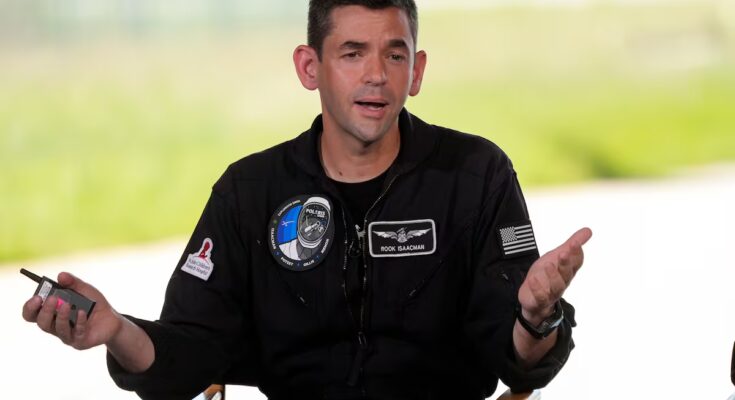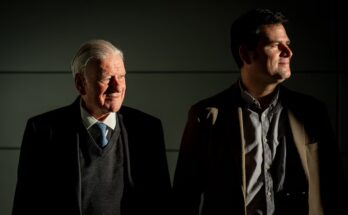US President Donald Trump announced on Tuesday that he will once again nominate Jared Isaacman, a technology mogul, aerobatic pilot and commercial astronaut on SpaceX missions, Elon Musk’s space company, for the position of NASA administrator. Isaacman’s new appointment comes five months after Trump abruptly fired him, days after he publicly aired his differences with Musk following the end of his tenure as a White House adviser. Then, Isaacman was about to be confirmed by the Senate to lead the American space agency. After nearly five months of scrutiny by senators, it had already passed a preliminary examination and reached sufficient consensus among Republicans and Democrats. By early June, his Senate confirmation was considered done — it was just a matter of days before Isaacman took office. Now the process starts again.
If five months ago Trump did not explain the real reasons that led him to discard Isaacman – he said he had lost trust in him and underlined the donations made in the past to Democratic politicians -, now he does not clarify why he once again considers him suitable to occupy the position of top leader of NASA. In a publication on his social network Truth, the American president highlighted Isaacman’s experience as a businessman, philanthropist, pilot and astronaut, underlining his passion for space exploration and his ability to revive the sector’s economy. After all, it is the same thing he said when he nominated him for the first time, on 4 December 2024.
The first nomination of the man who is now running again – also a billionaire thanks to the success of the Shift4 payments platform he founded – ended abruptly after Trump severed relations with Musk, Isaacman’s friend and partner. The appointee thanked the president for his new appointment in a tweet. However, neither Isaacman nor Trump mention in their messages that the businessman had already run for office months ago, nor that he had been shot down.
That void at the space agency was filled on an interim basis by Transportation Secretary Sean Duffy, something that further soured Trump’s relationship with Musk, which recently appears to have rekindled. Musk reacted Tuesday to Isaacman’s nomination with several emoticons of joy at Trump’s decision, on the social network X, which he owns.
A year of ups and downs at NASA
Isaacman became a candidate to lead the American space agency after his participation as an astronaut in two private SpaceX missions that he co-financed with Elon Musk. In 2021 he was commander of SpaceX’s Inspiration4 mission, the first completely civilian orbital flight, and in 2024 he also commanded a ship that broke several all-time records in the space race and was the protagonist of the first spacewalk carried out by a commercial astronaut, not trained by any government space agency. His nomination to lead NASA is linked to Trump’s strategy to increasingly integrate the private sector into American space exploration.
This strategy, shared by Trump, Musk and Isaacman, would mean giving a few more twists to NASA’s current line, which already subcontracts to a commercial operator – SpaceX, owned by Musk – the transport of its astronauts on private ships to the International Space Station; Until 2011 this service was provided by space shuttles developed and operated by the same space agency. Likewise, the return of American astronauts to the surface of the Moon depends on another subcontract with SpaceX, the company charged with developing the lunar lander – conceived as a modified version of its Starship spacecraft – for the Artemis 3 mission; and on that space journey, astronauts will travel to the Moon’s orbit aboard an Orion spacecraft created and launched by NASA.
The very high cost of the Orion capsules and SLS shuttles, which were also discarded after each mission, was sharply criticized by Musk and Isaacman. However, the reality is that NASA has already done its part – despite delays and cost overruns – and has its own rockets ready to take astronauts into lunar orbit on the Artemis 2 mission, which the space agency plans to launch starting in February 2026; after a single uncrewed test flight, the Artemis 1 mission, which occurred in 2022. And on the other hand, SpaceX is stalled in the development of its Starship megarocket and ship, which after 11 test flights failed to even reach Earth orbit.
The race to the Moon, in the hands of China
NASA’s Artemis 3 mission, which is expected to carry the first woman to set foot on the Moon, is expected to lift off in mid-2027. But because of SpaceX’s delay with Starship, there is consensus in the space industry that that date will be delayed by at least several years. And ahead is China, which just announced that everything is going according to plan in its plans to achieve a manned lunar landing before 2030. It would be the culmination of China’s lunar program, which has managed to successfully complete all previous steps with robotic missions over the last decade.
In considering his first nomination to lead NASA, senators extracted a pledge from Isaacman to prioritize defeating the United States in the space race against China, and to do so while respecting the current Artemis mission plan. But in that plan the one that is most lame is the private leg, that of SpaceX. The only American alternative to the Starship today is the New Glenn shuttle – from the Blue Origin space company, owned by Jeff Bezos -, which managed to reach Earth orbit with its first test flight last January. However, it will also take years of development to get a lander capable of carrying humans to the Moon.
Recently, NASA’s still-interim administrator Sean Duffy hinted in an interview about the possibility of opening the Artemis 3 contract to other suppliers – such as Blue Origin – that could compete with SpaceX. These statements provoked an angry reaction from Elon Musk, who mocked Duffy by calling him mannequin —stickman, in English—. The next thing, in this year of ups and downs at NASA since Trump won the presidential election, is that Musk’s friend and partner is once again the president’s nominee to lead the American space agency.
A year without leadership at NASA
In his message on Tuesday, Trump praised the work of the current acting administrator of NASA and also US Secretary of Transportation, Sean Duffy – lawyer and star of reality shows on television, with no experience in the space industry — and noted that Isaacman is the ideal person to lead the agency into “a new era” of technological discovery and advancement.
Isaacman’s nomination once again begins his path to Senate confirmation before he can officially assume the role of NASA administrator. The deadlines are uncertain, especially since the United States is currently facing a government shutdown that has already become the longest in its history. Under these conditions, it is difficult to schedule Isaacman’s new preliminary examination before the end of the year before the Committee on Commerce, Science and Transportation of the US Senate, which he had already passed last April.
And if his confirmation does not occur before December 31, 2025, Isaacman will have to start all over again to submit the documentation to be eligible, including that necessary to exclude possible conflicts of interest. If so, and taking into account the track record of previous NASA administrators, it is not expected to be confirmed until spring 2026.
Meanwhile, Sean Duffy will continue to serve as acting administrator, overseeing the space agency’s operations. Duffy took over that position in July, replacing Janet Petro, a NASA executive who rose to that interim position as soon as Donald Trump was sworn in as president in January, and Bill Nelson, a Democratic politician who flew into space in 1986 aboard the space shuttle, automatically left that position. Colombia and, after a long career as a congressman and senator, he was nominated by Joe Biden in 2021 to lead NASA.
Nearly a year after Nelson’s departure, NASA still has no replacement. It had two interim administrators, in the midst of a very complicated internal climate, due to layoffs and cuts to key scientific programs that led to resignations and even an attempted rebellion in the form of an open letter from interim workers to Sean Duffy. And in that same year, Elon Musk’s colossal spaceship, designed to take the United States to the Moon and Mars, did not make a single step forward in its trials to leave Earth. This year, NASA’s ups and downs in response to Trump’s relationship with Musk gave China victory in the new space race to the Moon.



